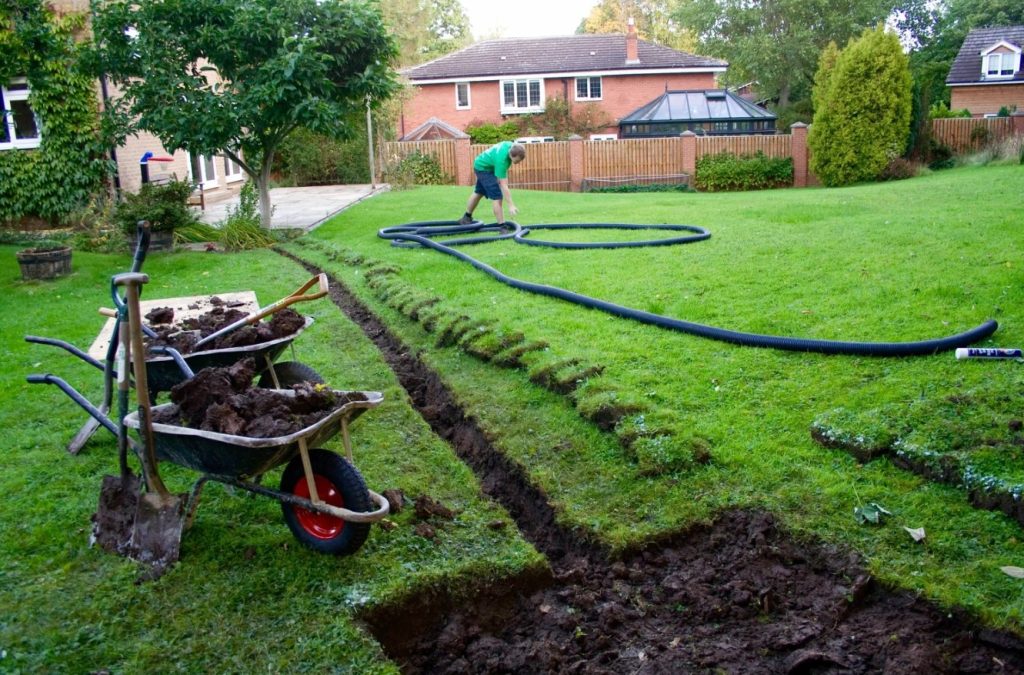Every Melbourne homeowner knows that plumbing issues can sneak up when you least expect them. A small leak, a bit of pooling water in the garden, or a slow drain might not seem like a big deal at first, but left unchecked, these problems can lead to expensive repairs and even structural damage.
The good news is that not every problem calls for a professional right away. There are practical yard drainage fixes you can try yourself, especially when it comes to drainage around your home. But knowing when to put the tools down and call a qualified plumber in Doreen is what separates a quick solution from a long-term headache.
This blog shares 15 common DIY yard drainage solutions to fix your drainage issues at home without an expert’s help.
Recognising Drainage Issues
Before you start digging trenches or buying pipes, you need to recognise the early signs of a drainage problem. Common clues include:
- Puddles or soggy spots in your lawn days after rain
- Water flowing towards your home’s foundations
- Slow-draining sinks or showers
- A musty smell or damp patches inside the house
- Overflowing gutters even after light rain
- Cracked paving or sinking soil around your property
These are warning signs that water isn’t draining as it should. And while minor issues can be handled with DIY fixes, serious problems require professional drainage solutions in Whittlesea to prevent long-term damage.
If you’re unsure about how to tackle a problem, it’s always best to call a professional. A local plumber who specialises in lawn drainage solutions will know the soil conditions well and can design systems that solve the current matter and also prevent future damage.
15 DIY Drainage Solutions
If your problem is mild and you’re comfortable rolling up your sleeves, here are 15 effective DIY yard drainage fixes you can try at home.
Regrade the Soil
Water should flow away from your house, not towards it. Regrading involves reshaping the slope of your lawn so water naturally drains downhill. It’s one of the simplest and most effective solutions for surface water issues.
Aerate Your Lawn
Compacted soil prevents water from soaking in. By using a manual or machine aerator, you create small holes that allow water and air to move freely. This lets the water penetrate deeper, reducing surface pooling.
Loosen Compacted Soil
For smaller areas, you can dig and loosen compacted patches with a garden fork. This helps roots breathe and improves water absorption.
Install a French Drain
A French drain is a trench filled with gravel and a perforated pipe that redirects water away from trouble spots. It’s an excellent choice if your garden regularly floods in one particular area.
Set Up a Channel Drain
Channel drains are long grates installed across driveways, patios, or paved areas. They quickly collect and move water to a safe discharge point, preventing puddles where water can’t naturally seep into the soil.
Add Downspout Extensions
Sometimes, water pooling near foundations is as simple as downspouts ending too close to the house. Extensions can direct rainwater further away, reducing foundation risks.
Build a Catch Basin
A catch basin collects water from the surface and channels it underground into drainage pipes. It’s especially useful for low spots in your yard where water gathers.
Create a Dry Creek Bed or Swale
By shaping a shallow channel and filling it with decorative rocks, you can guide water away while adding a feature that blends into your landscaping.
Install a Dry Well
A dry well is an underground chamber that collects and disperses excess water deep into the soil. It’s effective for managing large volumes of water after storms.
Use Rain Gardens
Planting a rain garden in a naturally low-lying area creates a beautiful solution. Deep-rooted native plants absorb and filter water, reducing surface flooding.
Employ Rain Barrels
Attach barrels to your downspouts to collect rainwater. Not only does this keep water away from your home, but you can also reuse it for gardening during dry spells.
Apply Permeable Hardscaping
Instead of solid concrete, consider permeable pavers or gravel. These allow water to soak through rather than running off into unwanted areas.
Maintain Regular Gutter and Downspout Cleaning
Clogged gutters are one of the biggest causes of drainage problems. Cleaning them regularly ensures rainwater flows freely and doesn’t spill over near foundations.
Install Yard Drains or Area Drains
Yard drains look like small grates in the ground. They collect surface water and connect to underground pipes, redirecting water to a safer area.
Channel Water to a Safe Discharge Point
No matter which method you choose, the end goal is the same: water needs to be directed somewhere safe. Whether that’s a storm drain, street gutter, or soakaway pit, always make sure water isn’t just moved from one problem spot to another.
When to Call a Professional
DIY yard drainage solutions work well for smaller problems. They save money, keep your lawn healthy, and prevent minor damage. But if you’re dealing with constant flooding, water seeping into your home, or complex underground drainage issues, it’s time to call in a certified and licensed plumber.
By calling for professional drainage solutions in Northern Suburbs, Melbourne, you can achieve effective results and peace of mind. An experienced plumber will assess soil conditions, check stormwater systems, and install long-term fixes that protect your home.
Conclusion
Drainage problems, when neglected, can cause structural damage to your property. At Perspective Plumbing, we focus on fixing the minor issues before they escalate into major repairs.
For reliable lawn drainage solutions by a licensed plumber, call us at 0411 295 646 today.


